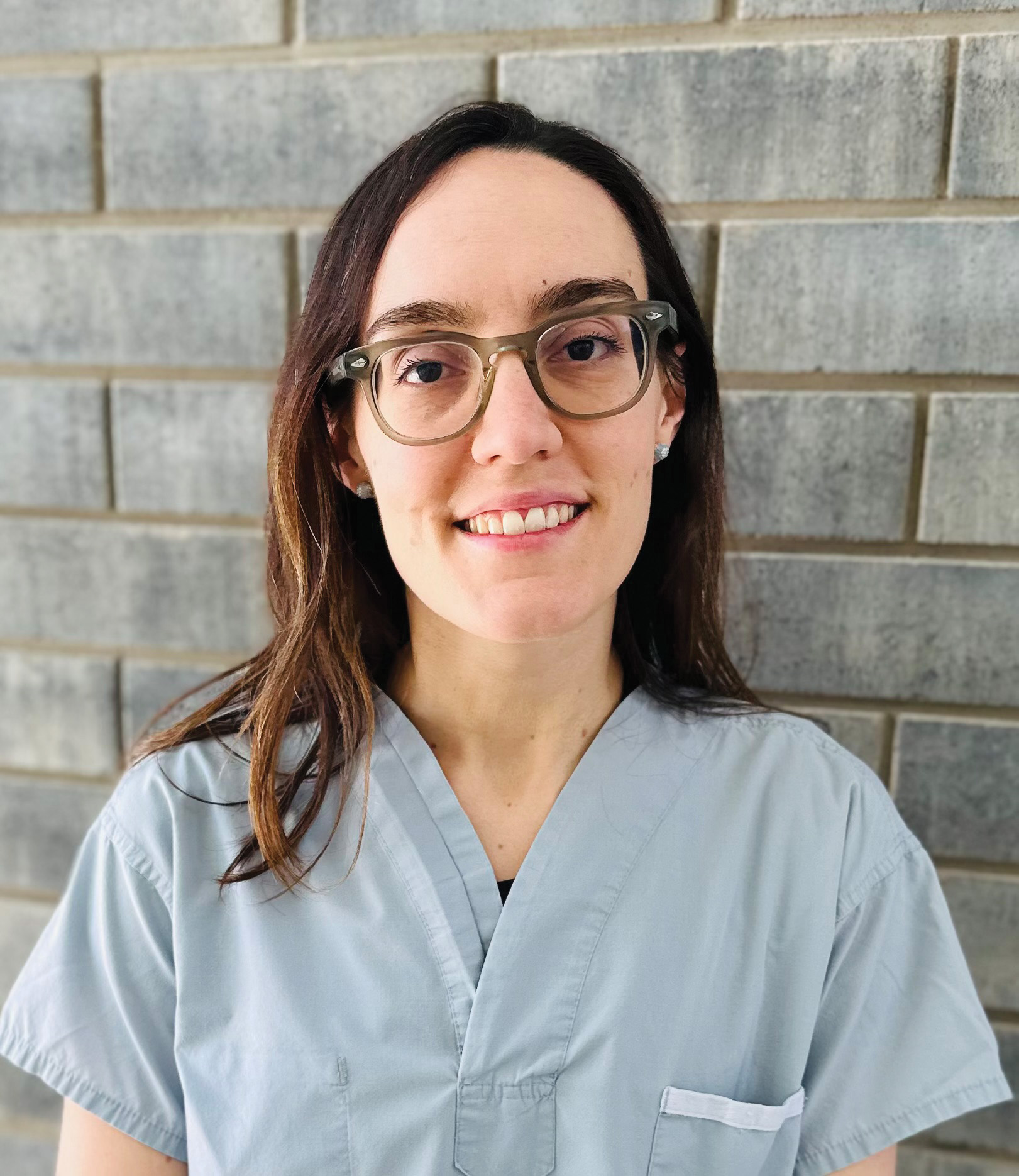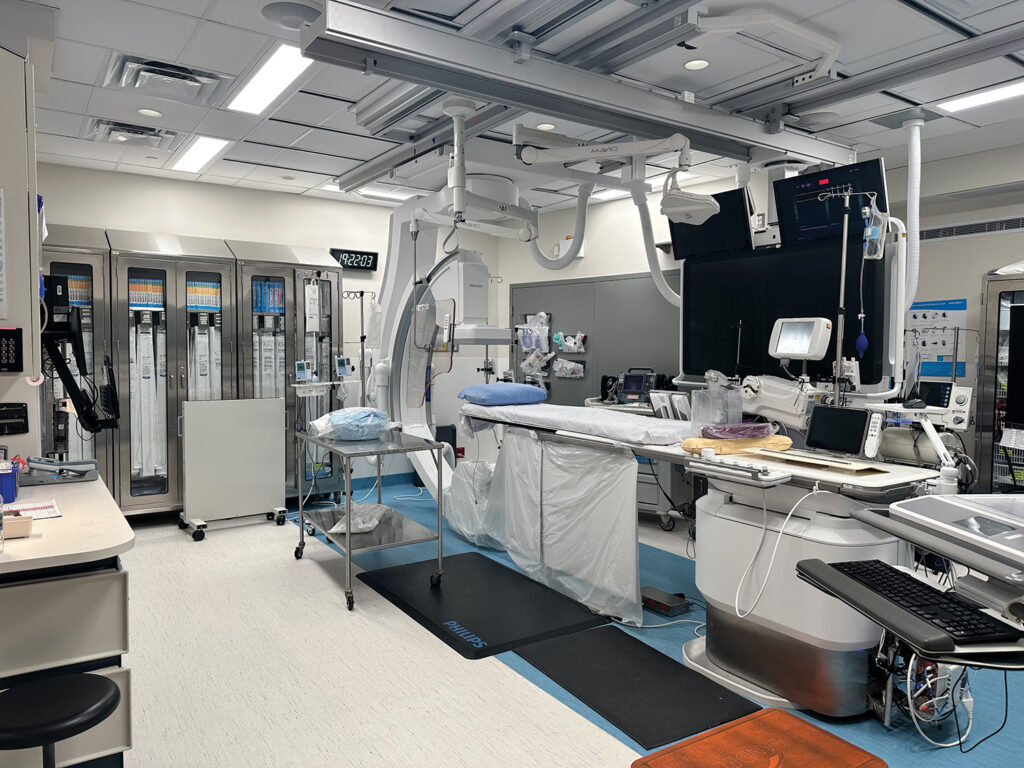By Olivia Piché | Photographs: courtesy Anna Bizios
Calgary’s cath labs provide critical care with less-invasive methods, giving cardiac patients better outcomes and recovery.

The Foothills Medical Centre in Calgary is home to six cardiac catheterization laboratories — or cath labs — that serve Southern Alberta and parts of Saskatchewan and British Columbia. One of these labs recently received a facelift thanks to funding from Calgary Health Foundation. The newly renovated, state-of-the-art cath lab opened in Spring 2023 and provides more patients with a wide range of critical cardiac procedures.
Cardiac catheterization involves the insertion of a catheter (a thin, flexible tube) into a chamber or vessel of the heart, a technique used for diagnostic and interventional purposes. The most common cath lab procedures are coronary angiograms to examine arteries and angioplasties, where stents are placed to unblock arteries. Cardiac catheterization doesn’t require large surgical incisions to open the chest and is less invasive, with lower risks and shorter recovery times.
“The impact of our ability to help Albertans with their coronary or cardiac issues close to home with less-invasive techniques is enormous,” says interventional cardiologist, Dr. Anna Bizios.
The crucial importance of Calgary’s cath labs comes to light with heart attacks — making it possible to intervene as a heart attack happens. “Somebody can come in during the middle of a true massive heart attack, and within 30 minutes, the vessel can be opened and fixed, with blood restored to the heart’s muscle,” Bizios affirms. “It’s absolutely amazing to see.”
Bizios explains that since the advent of cath labs, mortality rates and recovery periods from heart attacks have significantly improved. “Somebody can come in now with a heart attack and be out of the hospital within two to three days,” she says.
Cath labs’ life-saving TAVI program
In 2011, a transcatheter aortic valve implantation (TAVI) program was established at Calgary’s cath labs. Bizios is the physician lead of the program.
TAVI was developed as an alternative for patients who were too sick or weak to undergo open-heart surgery. The life-saving procedure involves running a new heart valve through a catheter inserted into a blood vessel in the groin. The new valve travels up to the aorta, is positioned inside the faulty valve, and expands, using the old valve as an anchor.

Most TAVI patients can go home the next day and don’t need rehabilitative therapy. That eliminates a huge strain on patients, their families, and the health care system. Bizios adds that there are studies demonstrating a lower chance of stroke than open-heart surgery and evidence of lower rates of rehospitalization.
This past year, Calgary’s cath labs saw 225 TAVI patients, a testimony to the program’s success compared to the 23 patients in its first year.
“It’s very satisfying because that translates into patients being able to go home to active lives and resume the activities they enjoy,” says Bizios. “Ultimately, that’s what this is all about: helping Albertans live longer and live better.”


